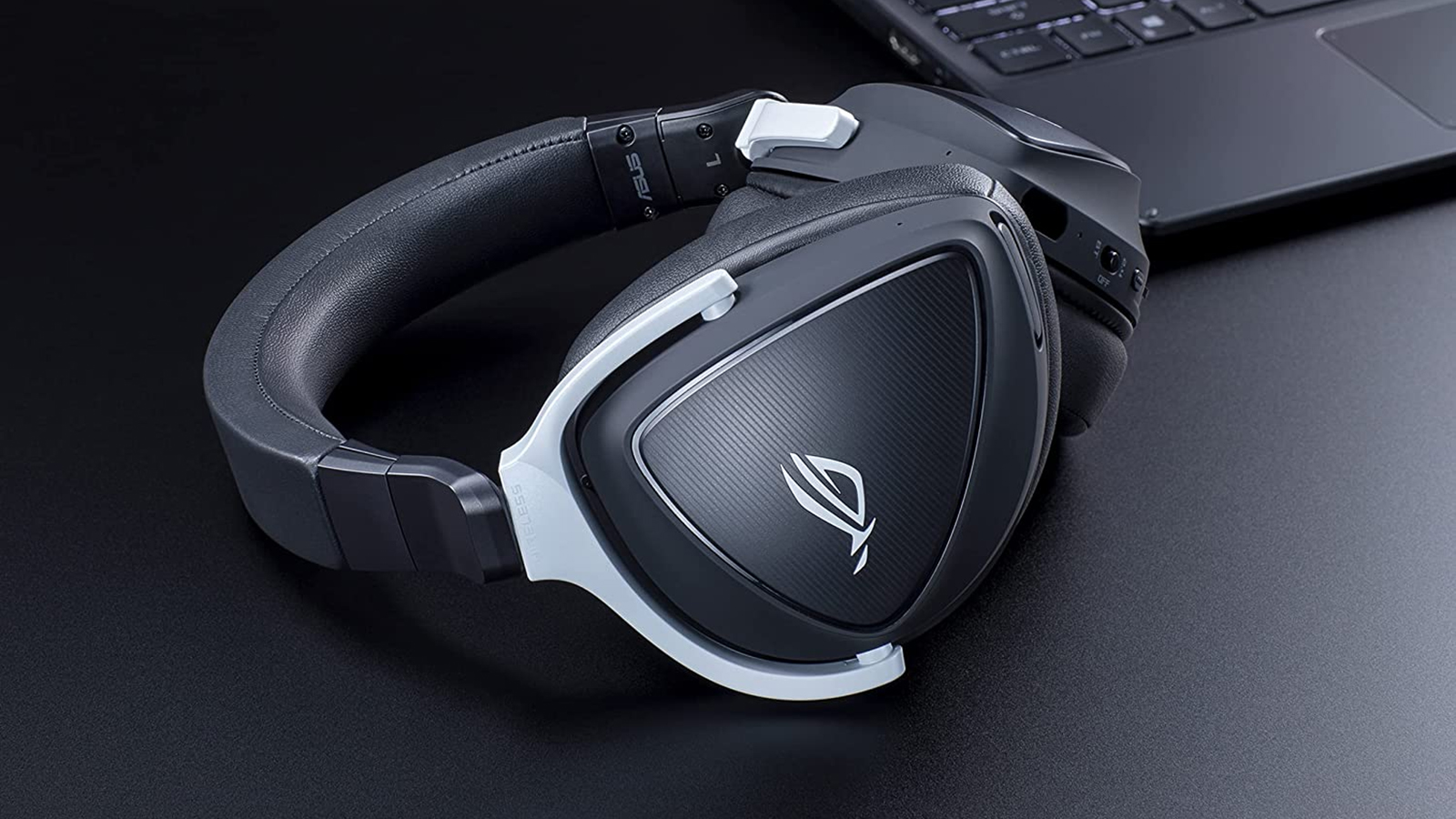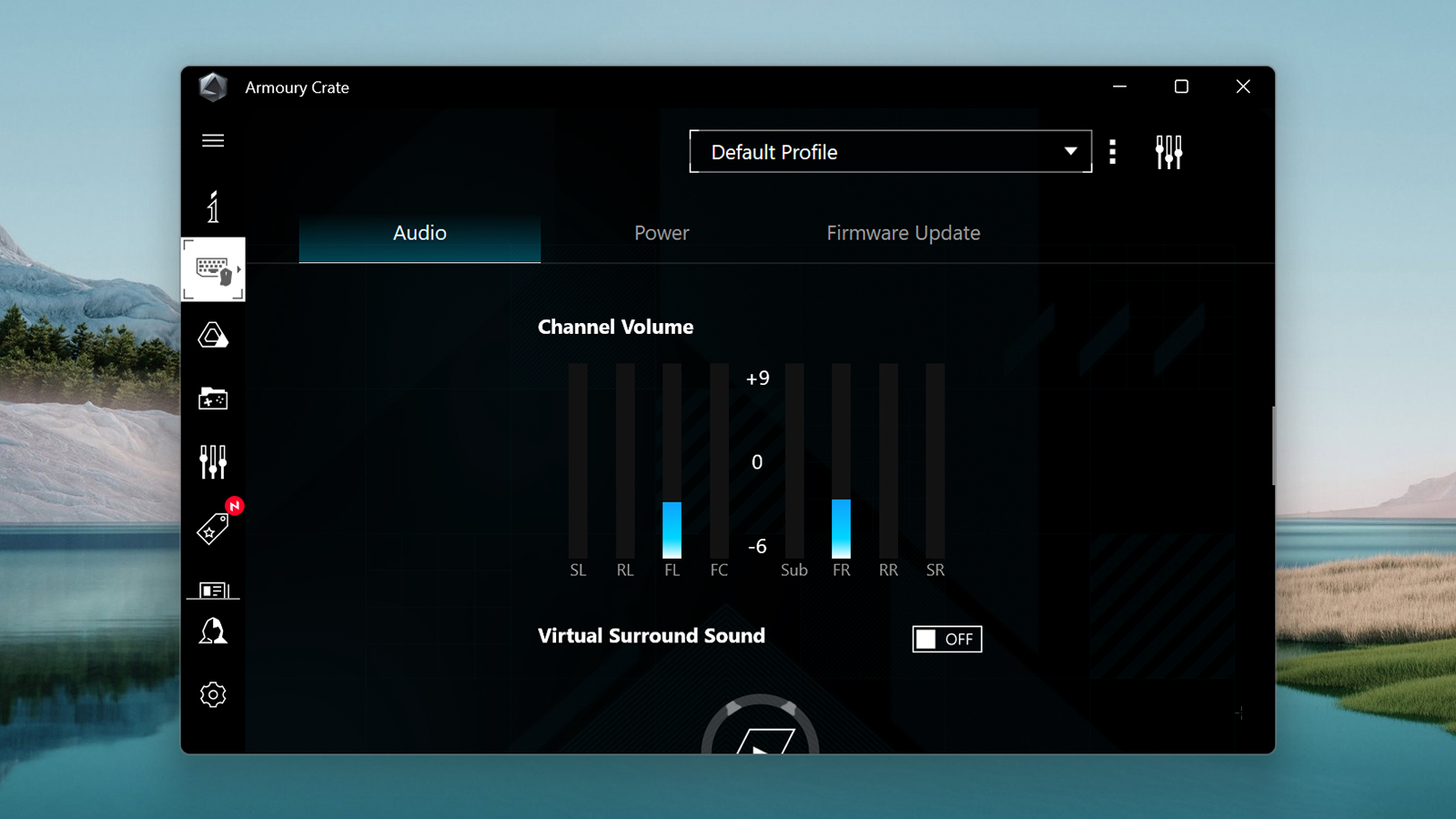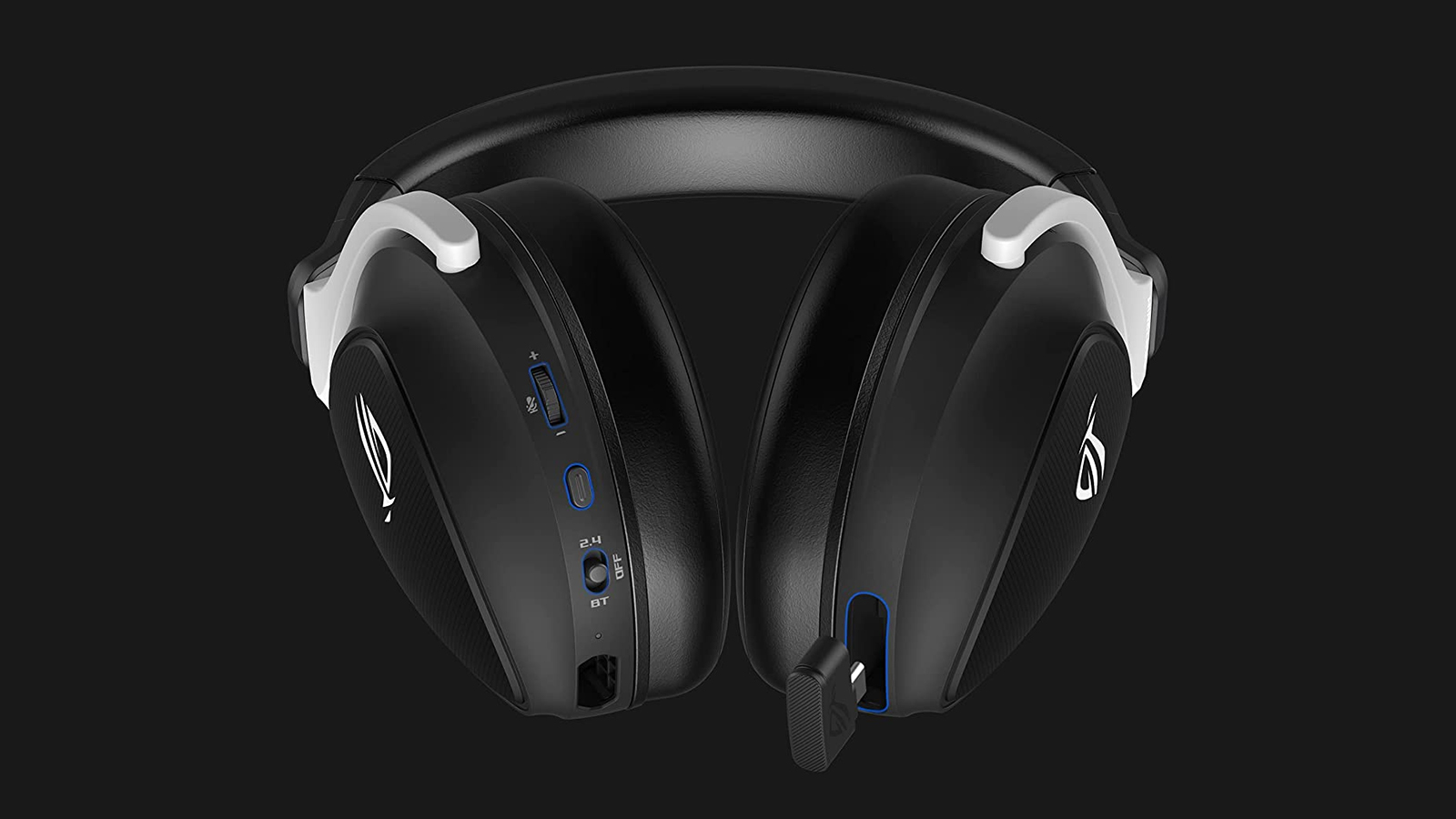Asus ROG Delta S Wireless review: top-quality audio from almost any device
The Asus ROG Delta S Wireless headset is pleasingly versatile and sounds great


To our ears the Asus ROG Delta S Wireless headset sounds pretty fantastic, and you get all the freedom of listening without wires. It'll work with multiple different devices and platforms, though you do miss out on some features offered by more expensive gaming headsets.
-
+
Superb audio quality throughout
-
+
Compatible with lots of devices
-
+
Can be set up within minutes
-
-
The design and build is all plastic
-
-
No RGB lighting options available
-
-
No wired option for your audio
Why you can trust T3

With the Asus ROG Delta S Wireless headphones we've got another contender for one of the best gaming headsets around at the moment – and it certainly comes with a certain amount of brand recognition with the Asus Republic of Gamers name attached to it.
While these headphones could quite easily claim to be one of the best PC gaming headsets around, they'll also work with Macs, the Sony PlayStation 5, and the Nintendo Switch via the included USB-C dongle, and with plenty of other devices through a Bluetooth link.
Our in-depth Asus ROG Delta S Wireless review will provide you with all the details you need to know about whether or not these are the wireless headphones for you – and do be sure to also check out our guides to the best gaming chairs and the best gaming laptops. Oh, and if the wireless model doesn't appeal then take a look at our review of the ROG S wired version instead.
Asus ROG Delta S Wireless: price & availability
The Asus ROG Delta S Wireless headset is out now and available to buy: check the widgets embedded in this page for the most up-to-date pricing and the best deals online. At the time of writing, in the UK, you can pick up the headset for around £160 from retailers such as Amazon and Asus directly. In the US, you'll pay around $170 for the headset.
Asus ROG Delta S Wireless review: design & setup

When it comes to aesthetics, there's nothing really spectacular about the Asus ROG Delta S Wireless headset. But there's a certain amount of style here too: there are some well-positioned white accents amongst all the black, and while the build is entirely plastic, the headphones don't feel cheap or poorly put together. As you would expect, the Asus ROG logo is on the earcups, but there's nothing in the way of RGB lighting.
There is a USB-A to USB-C cable included in the box (the USB-A end goes into a charging plug or a laptop), but this is only for charging the headset – you can't play any audio through it (if you need a wired option, consider the Asus ROG Delta S, which does light up). For connecting to devices, you can either use the supplied 2.4GHz USB-C dongle (which is actually stored in the headset itself), or you can opt for good old-fashioned Bluetooth – a protocol that works with a host of different devices.
Connect via the USB-C dongle and the headphones are picked up almost immediately – you don't need to waste time downloading drivers or going through setup menus. If you're on Windows, you'll be prompted to download the Armoury Crate software – this gives you access to a few extra features, such as bass boost and virtual surround sound options. There's also a voice clarity feature for boosting dialogue in movies and games, but to our ears it didn't seem to make a huge amount of difference.
Get all the latest news, reviews, deals and buying guides on gorgeous tech, home and active products from the T3 experts
On the left earcup you've got the USB-C charging port, a volume dial, a switch to control power and Bluetooth or 2.4GHz connectivity, and a multi-purpose button that lets you pause playback and skip through tracks in certain audio apps. On the right earcup there's nothing but the storage compartment for the USB-C dongle. Everything is nice and compact, and there's no external mic – it's built into the ear cups.
Asus ROG Delta S Wireless review: features & audio

The Asus ROG Delta S Wireless headphones are fitted with 50mm neodymium magnet drivers, and once again it's a headset from Asus that offers superb audio quality. We tested it with movies, games and music, and it performs really well in every use case: sounds are deep and rich, and don't lose any of their fidelity at higher volumes. From quieter, more fragile sounds to sounds that are fuller and heavier, everything is distinct and clear (depending on the quality of the audio source as well, of course).
What's more, the headset is really comfortable to wear, thanks to the cushioning on the headband and the earcups. You do get a lighter pair of pads included in the box, but we stuck with the originals, and they give your ears a tight but not suffocating fit. Some adjustment is possible via the headband, and overall we were very impressed with both the fit of the Asus ROG Delta S Wireless and the sound coming through it.
Of the extra features on offer here, it's the virtual surround sound that's most interesting: it's certainly the bonus function that we noticed the most difference with, and in games where you really need to know where certain sounds are coming from, it can be very handy indeed.
When it comes to battery life, Asus suggests around 25 hours is the norm, which matches what we found in our testing – although it depends to some extent on headset volume and the connection technology you're using (we also like the power saving mode that kicks in automatically if no audio is playing).
As for the microphone, as we've mentioned it's built right into the headset, so you don't even realise it's there. It uses beamforming and noise cancellation technology to keep your voice as clear as possible – we found it satisfactory in use, but not much more than that.
Asus ROG Delta S Wireless review: verdict

The Asus ROG Delta S Wireless isn't the most expensive gaming headset you're going to come across, nor is it the cheapest – and with that in mind you're going to find there are some positives and negatives that come along with that mid-range price. If this fits your budget and you definitely want to go wireless, it's definitely one of the better options out there at the moment.
However, there's no wired option, which means when the battery dies you might be struggling to get connected for a while (a 15-minute charge should be good for three hours of use). Certain high-end features like automatic noise cancellation aren't available either, and the Windows software that's provided by Asus could do with a bit of a visual revamp too.
Overall, though, the most important element is the audio quality – and we can't fault this headset on that score. Everything sounds full and rich, with clarity retained at both high and low volumes. The ROG Delta S Wireless is solidly built and is comfortable to wear, which are key considerations if your gaming sessions tend to go on for hours.
Also consider
You've certainly got plenty of choice when it comes to gaming headsets right now. If Asus is a brand you trust and you like its design approach, one alternative to the headset we've reviewed here is the Asus ROG Delta S Animate: it's wired rather than wireless, and it comes with monochrome lighting on the side of the earcups, which you can customise using the supplied software. It's worth a look if you want something a little bit different but still require top-quality audio.
For those of you who definitely want to stick with the freedom of a wireless headset, consider the Sony Pulse 3D Wireless. As you would expect given the manufacturer, it's particularly good for the PlayStation 5, and it's really comfortable to wear as well as coming in at an affordable price point (it's around half the price of the Asus ROG Delta S Wireless). The supplied USB-A dongle works with PCs and Macs as well as PlayStations, and there is the option of using a 3.5mm cable too.
Dave has over 20 years' experience in the tech journalism industry, covering hardware and software across mobile, computing, smart home, home entertainment, wearables, gaming and the web – you can find his writing online, in print, and even in the occasional scientific paper, across major tech titles like T3, TechRadar, Gizmodo and Wired. Outside of work, he enjoys long walks in the countryside, skiing down mountains, watching football matches (as long as his team is winning) and keeping up with the latest movies.
